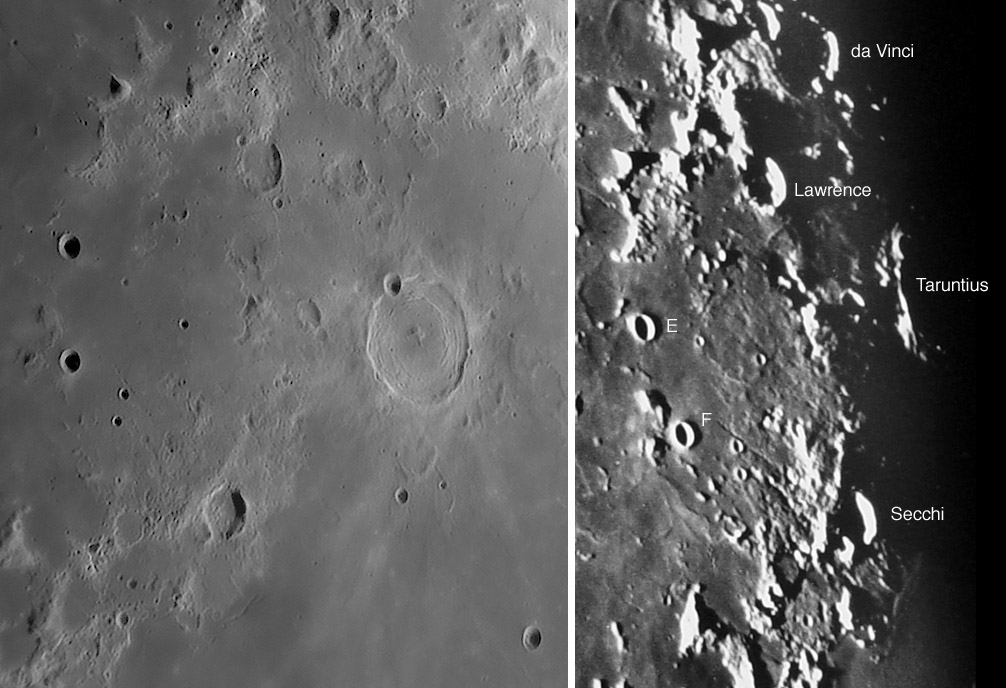
left image by Bob Pilz, right one from Consolidated Lunar Atlas.
How can an easily accessible area be infrequently imaged? Easy - when it lacks spectacular landforms. Bob’s relatively high Sun view of the area around Taruntius shows an area that - except for Taruntius and its faint rays - is pretty boring. Bob’s image emphasizes the oddly flat terrain west and north of the crater. In this view the Secchi Mountains (an undeserved name - from Taruntius to the bottom right) and the Crisium ejecta north of da Vinci and Lawrence have an old, rounded appearance. But something really striking appears in the very low Sun image from the Consolidated Lunar Atlas. Notice on the high Sun view that the mare surface eastward of Taruntius E and F is pretty homogeneous. But under low light, the eastern half of this area is highly textured and contains a number of shallow pits. It is an older mare surface, or perhaps its an older non-mare surface veneered with a thin coating of lava.
Technical Details:
April 23, 2007, ~01:11UT. 200mm f/6 Newtonian reflector + Televue 3x Barlow + DMK 21BF04 B/W camera + ‘Blue’ IR-block filter, .20 arcsec/pixel, 30 fps, 1/39 sec, 1400/9000; Processed in Registax, ImagesPlus, PS CS, Focus Magic. Taken from Lat: 35 degrees 36 minutes N, Long: 82 degrees 33 minutes W, Elev:~850m.
Related Links:
Rükl chart 37
Bob’s website
Yesterday's LPOD: Two Worlds, One View
Tomorrow's LPOD: A Bullet Through the Moon



